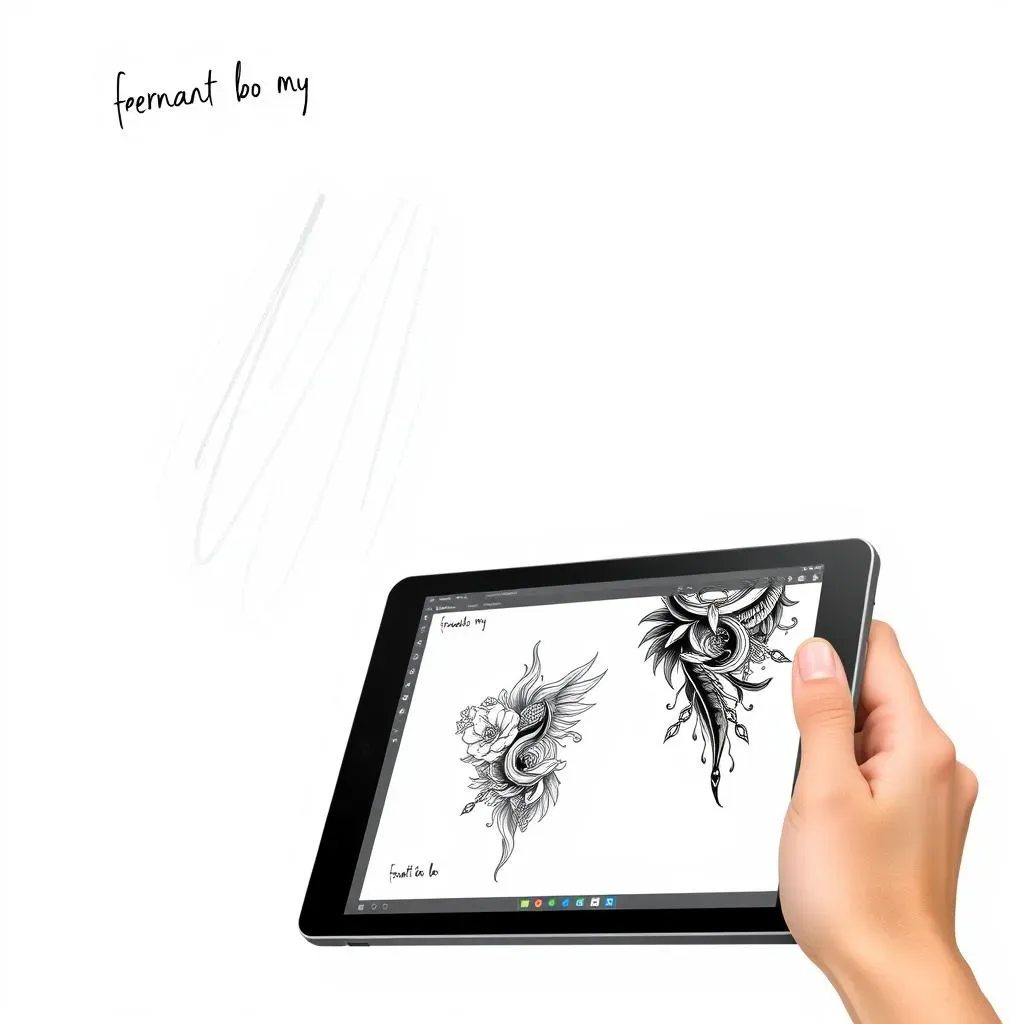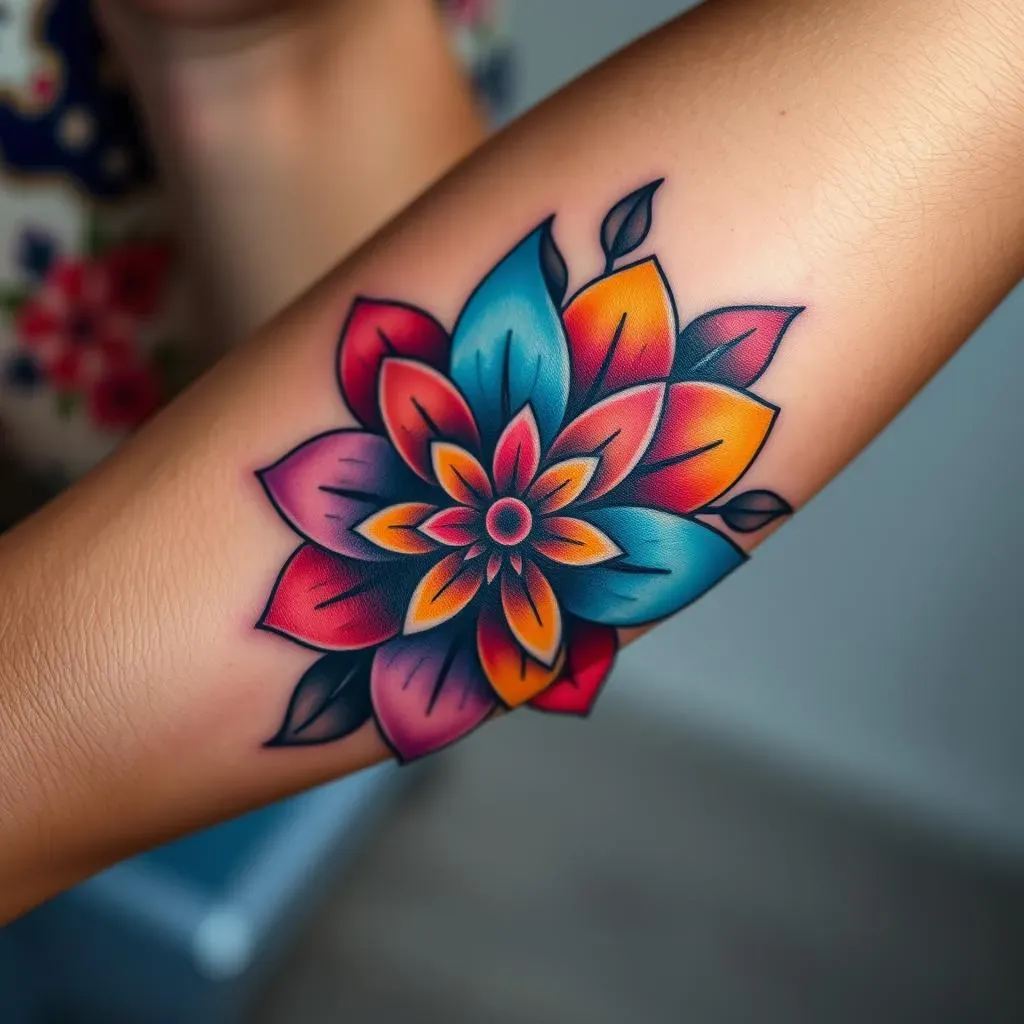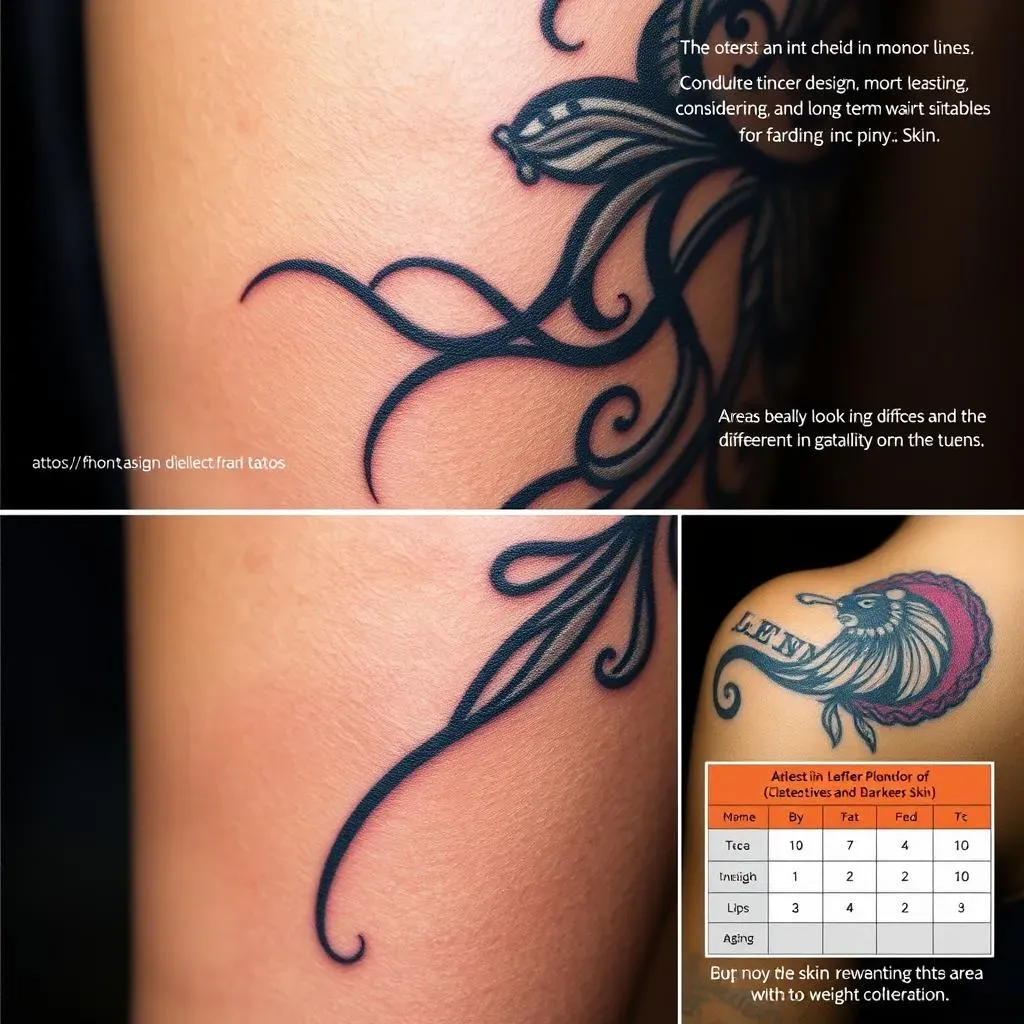Table of Contents
Ever wondered how those amazing tattoo designs come to life? It's more than just drawing; it's a blend of artistry, technical skill, and understanding how ink interacts with skin. This article breaks down the process of how tattoo designs work, from the initial spark of an idea to the final masterpiece on skin. We'll explore how artists find inspiration, choose the right style, and translate their vision into a stencil. We'll also examine the crucial design elements that make a tattoo pop – color, depth, and negative space. Plus, we'll consider the long-term effects of aging and placement on the body, ensuring your ink looks great for years to come. So, whether you're an aspiring tattoo artist or simply curious about the craft, get ready to uncover the secrets behind creating incredible tattoo designs.
Finding Inspiration and Choosing a Tattoo Style
Finding Inspiration and Choosing a Tattoo Style
So, you're diving into the world of tattoo design? Awesome! First things first: inspiration. Where do you even start? Well, everywhere! Seriously, keep your eyes peeled. Nature, art, history books, even that funky wallpaper at your grandma's house can spark an idea. Don't limit yourself. Pinterest and Instagram are goldmines, but be careful not to just copy. Use them as a springboard. Once you've got some ideas swirling, think about style. Are you into bold, classic American Traditional with thick lines and bright colors? Or maybe you're drawn to the delicate details of Japanese-style tattoos? Knowing your style is key, because it will influence every decision you make from there on out.
Designing Your Tattoo: From Paper to Pixels
Designing Your Tattoo: From Paper to Pixels
Alright, so you've got your inspiration and style down. Now comes the fun part: actually designing the thing! You've got two main paths here: old-school hand-drawing or digital design. If you're a pencil-and-paper kind of person, start with light sketches. Don't be afraid to mess up! That's what erasers are for. Build up your design in layers, refining the details as you go. Think of it like sculpting. If you're more tech-savvy, jump into the digital realm. Programs like Procreate or Adobe Photoshop are amazing for tattoo design. They let you zoom in for super-fine details, easily change colors, and undo mistakes with a click. Plus, you can create stencils directly from your digital design, which is a huge time-saver.
Design Method | Pros | Cons |
|---|---|---|
Hand-Drawing | Tactile, traditional feel, no tech needed | Can be harder to correct mistakes, requires physical tools |
Digital Design | Easy to edit, precise, creates stencils easily | Requires software and a tablet, learning curve |
Key Design Elements: Color, Depth, and Negative Space
Key Design Elements: Color, Depth, and Negative Space
Color Palettes: Making Your Tattoo Pop
Color can make or break a tattoo. Think about it: a vibrant, well-chosen palette can draw the eye and create a lasting impression. But a muddy, clashing mess? Yikes. Start by considering the style you've chosen. American Traditional screams for bold primaries, while watercolor tattoos thrive on soft, blended hues. Also, think about your client's skin tone. Cooler skin tones can handle brighter colors, while warmer tones might look better with earthy shades. Don't be afraid to experiment, but always keep harmony in mind. Less is often more. A few well-chosen colors can be way more effective than a rainbow explosion.
Ever seen a tattoo that just looks...flat? That's where depth comes in. Creating the illusion of depth makes your design way more interesting and realistic. One way to do this is by using shading. Darker shades create shadows, making objects appear to recede, while lighter shades highlight areas, bringing them forward. Overlapping elements is another trick. By placing some objects in front of others, you create a sense of perspective. Experiment with different line weights too. Thicker lines tend to stand out more, while thinner lines can add subtle detail and depth.
Color Consideration | Description | Example |
|---|---|---|
Skin Tone | Matching colors to the client's complexion | Earthy tones on warm skin, bright colors on cool skin |
Style | Choosing colors that fit the tattoo style | Bold primaries for American Traditional, soft hues for watercolor |
Contrast | Using light and dark shades to create visual interest | Dark outlines with light shading inside |
Negative Space: The Unsung Hero
Negative space is the empty area around and between the elements of your design. It's like the breathing room for your tattoo. Using negative space effectively can prevent a tattoo from looking too crowded or "busy." It can also create interesting shapes and visual effects. Think about it like this: sometimes what you don't draw is just as important as what you do draw. It's a delicate balance, but mastering negative space can elevate your tattoo designs to the next level.
Skin breaks are similar to negative space, but they specifically refer to leaving small gaps within the tattoo itself. This is especially important for intricate designs or areas that tend to blur over time, like fingers. A tiny skin break can prevent lines from merging together, ensuring the tattoo stays crisp and legible for years to come. It's like adding little escape routes for the ink, giving it room to breathe and preventing a muddy mess down the road. Don't underestimate the power of a well-placed skin break!
“The best things in life are free. The second best things are very, very expensive.” – Coco Chanel
LongTerm Considerations: Skin Tone, Aging, and Placement of Tattoo Designs
LongTerm Considerations: Skin Tone, Aging, and Placement of Tattoo Designs
so you've designed this killer tattoo, but have you thought about how it's going to look in, like, ten years? Skin is a living, breathing canvas, and it changes over time. First off, skin tone matters big time. Tattoos on lighter skin tend to hold their vibrancy longer, while darker skin tones might require bolder line work and careful color selection to ensure the design remains visible. Aging is another factor. As skin loses elasticity, tattoos can stretch and distort, especially in areas prone to weight fluctuations. And finally, placement is key. Certain areas, like fingers and wrists, fade faster due to constant use and sun exposure. So, a super-detailed design on your pinky? Probably not the best idea. Think long-term, my friend. Your future self will thank you.
Line weight is another crucial aspect to consider. Fine lines might look great initially, but they tend to fade and blur over time, especially on areas with a lot of movement. Thicker lines, on the other hand, hold up better in the long run, providing a solid foundation for the design. Think of it like building a house: you need a strong framework to withstand the elements. The same goes for tattoos. A well-defined outline with bold lines will help your tattoo maintain its shape and clarity for years to come. It's like investing in quality materials – it might cost a bit more upfront, but it'll pay off in the long run.
Long-Term Factor | Considerations | Example |
|---|---|---|
Skin Tone | Color visibility, line boldness | Bolder lines for darker skin, vibrant colors for lighter skin |
Aging | Stretching, distortion | Avoid intricate designs on areas prone to weight fluctuations |
Placement | Fading, sun exposure | Choose less exposed areas for delicate designs |
Line Weight | Fading, blurring | Use thicker lines for longevity, especially on high-movement areas |
Choosing the right placement is a balancing act. You want a spot that shows off your awesome ink, but you also need to consider how that area will age. Areas with a lot of sun exposure, like your shoulders or back, will fade faster unless you're diligent about sunscreen. Areas with a lot of movement, like your hands or feet, are prone to blurring. And areas with thin skin, like your wrists or ankles, can be more sensitive and might not hold ink as well. Do your research and talk to your tattoo artist about the best placement for your design and lifestyle. A little planning can go a long way in ensuring your tattoo looks amazing for years to come.
“The only way to do great work is to love what you do.” – Steve Jobs
The Art and Science of Tattoo Design
Creating a tattoo design is a complex dance between artistic vision and technical know-how. From the initial inspiration to the final placement, every decision impacts the tattoo's longevity and visual appeal. Understanding how these elements work together empowers both artists and clients to make informed choices, resulting in body art that's not only beautiful but also stands the test of time.